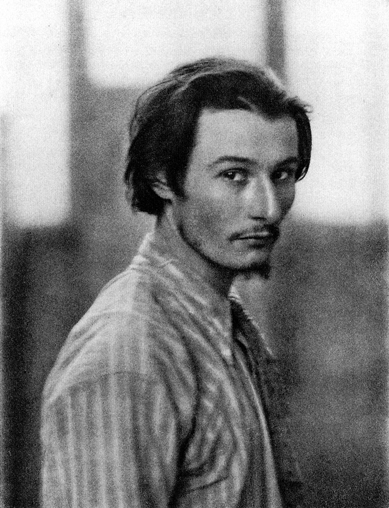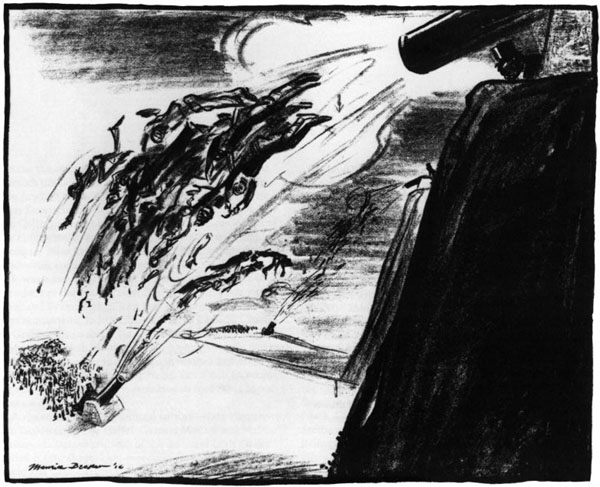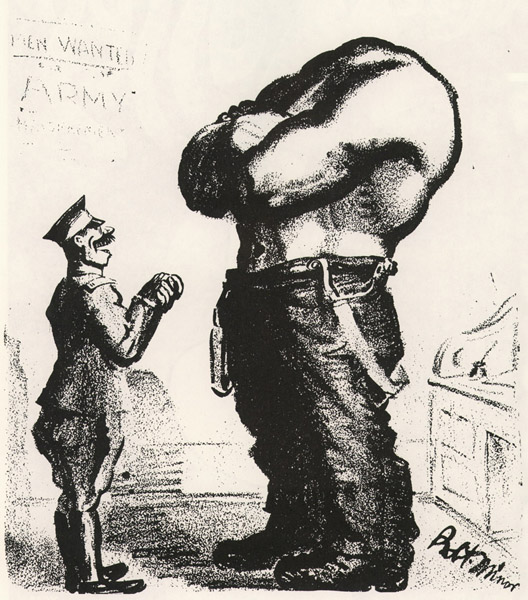
Excerpts from the BLAST "Manifesto" published June 20, 1914 and reproduced in Blast. No. 1 (June 20, 1914)-no. 2 (July 1915) -- London ; New York : John Lane, <1914-1915> :
.jpg)
1. Beyond Action and Reaction we would establish ourselves.
2. We start from opposite statements of a chosen world. Set up violent structure of adolescent clearness between two extremes.
3. We discharge ourselves on both sides.
4. We first first on one side, then on the other, but always for the SAME cause, which is neither side or both sides and ours.
5. Mercenaries were always the best troops.
6. We are primitive Mercenaries in the Modern World.
7. Our Cause is NO-MAN'S.
8. We set Humour at Humour's throat. Stir up Civil War among peaceful apes.
9. We only want Humour if it has fought like Tragedy.
10. We only want Tragedy if it can clench its side-muscles like hands on it's [sic] belly, and bring to the surface a laugh like a bomb. (pp. 30-31)

4. But our industries, and the Will that determined, face to face with its needs, the direction of the modern world, has reared up steel trees where the green one were lacking; has exploded in useful growths, and found wilder intricacies than those in Nature. (p. 36)

Still more disturbing is Henri Gaudier-Brzeska's reaffirmation of Vorticism, "Written from the Trenches," and published in volume two (July, 1915):
.jpg)
. . . I HAVE BEEN FIGHTING FOR TWO MONTHS and I can now gauge the intensity of life.
* * *
WITH ALL THE DESTRUCTION that works around us NOTHING IS CHANGED, EVEN SUPERFICIALLY . . .
* * *
[the war is a] PALTRY MECHANISM, WHICH SERVES AS A PURGE TO OVER-NUMEROUS HUMANITY.
THIS WAR IS A GREAT REMEDY.
IN THE INDIVIDUAL IT KILLS ARROGANCE, SELF-ESTEEM, PRIDE.
IT TAKES AWAY FROM THE MASSES NUMBERS UPON NUMBERS OF UNIMPORTANT UNITS,
WHOSE ECONOMIC ACTIVITIES BECOME NOXIOUS AS THE RECENT TRADE CRISES HAVE
SHOWN US.MY VIEWS ON SCULPTURE REMAIN ABSOLUTELY THE SAME.
IT IS THE VORTEX OF WILL, OF DECISION, THAT BEGINS.
(p. 33)
Gaudier-Brzeska had been killed just a month earlier, on June 5th, 1915.
For a contrast to/comparison with BLAST, see
Art for The Masses : A Radical Magazine and Its Graphics, 1911-1917 / Rebecca Zurier ; with an introduction by Leslie Fishbein, and artists' biographies by Elise K. Kenney and Earl Davis. -- Philadelphia : Temple University Press, 1988.

An American publication, The Masses, is described as "a radical journal of culture and commentary . .. a forum for socialists and anarchists, artists and authors" (jacket), "[t]he magazine that came to be known as one of the most dangerous in America" (p. 29). Its editors proclaimed "[t]his magazine is written for the masses. It is not written down to the masses" (p. 31); "[a] Revolutionary and not a Reform Magazine; a Magazine with a Sense of Humor and no Respect for the Respectable; Frank; Arrogant; Impertinent . . . a Magazine directed against Rigidity and Dogma wherever it is found . . . a Magazine whose final policy is to do as it Pleases and Conciliate Nobody, not even its Readers (p. xvi)." The artists for The Masses produced some especially memorable war cartoons. One published in June 1914, foreshadowed what that would result from the assasination in Sarajevo later that month: by Maurice Becker, and captioned Ammunition. (The Masses 5 (June 1914), pp.12-13.)

Another cartoon appeared in July 1916, during the Battle of the Somme: by Robert Minor, captioned Army Medical Examiner: "At last a perfect soldier!" (The Masses 8 (July 1916), back cover.)
Cartoons reproduced in Art for The Masses : A Radical Magazine and Its Graphics, 1911-1917 / Rebecca Zurier ; with an introduction by Leslie Fishbein, and artists' biographies by Elise K. Kenney and Earl Davis. -- Philadelphia : Temple University Press, 1988. pp. xii, 76.